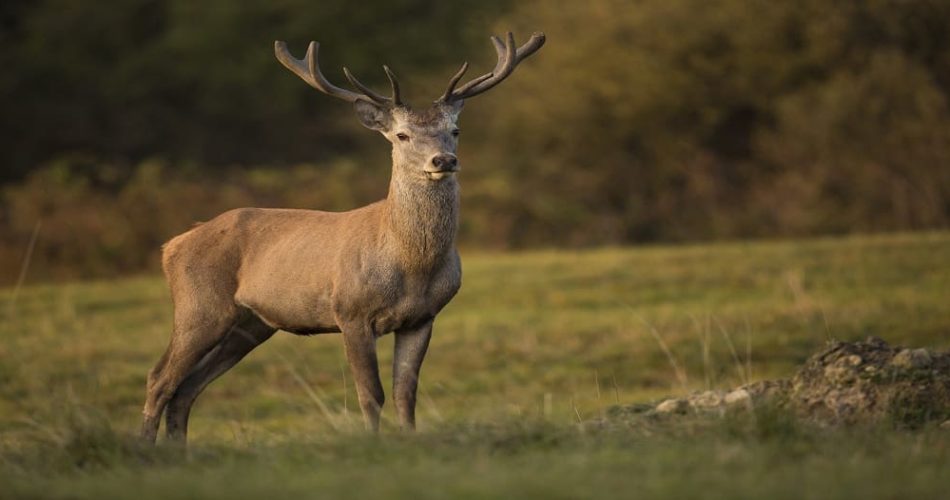In the Kaziranga National Park and Tiger Reserve, the population of the endangered eastern swamp deer, which is extinct everywhere in South Asia, has declined. The Eastern Swamp Deer Estimation revealed a drop from 907 people in 2018 to 868 individuals in 2019 and 2020.
Previously endemic to Kaziranga, the eastern swamp deer has spread to neighbouring regions such as Orang National Park and the Laokhowa-Burachapori wildlife sanctuaries.
Let’s look at some of the important notes related to eastern swamp deer for UPSC. Also, some preparation tips are mentioned below, so read the whole article.
Also Read: ISFR Report 2021 UPSC: Preparation for Geography or Environment Topic for UPSC Exam
Eastern Swamp Deer UPSC
#The barasingha, commonly known as the swamp deer, is a deer that can be found throughout the Indian subcontinent.
#Its antlers have more than three tines, which sets it apart from all other Indian deer species.
#Poaching for antlers and meat, as well as habitat loss, are all threats.
#The state animal of the Indian states of Madhya Pradesh and Uttar Pradesh is the barasingha.
#The Eastern Swamp Deer Estimation revealed a drop from 907 people in 2018 to 868 individuals in 2019 and 2020.
#Previously endemic to Kaziranga, the eastern swamp deer has spread to neighbouring regions such as Orang National Park and the Laokhowa-Burachapori wildlife sanctuaries.
Three Subspecies of Swamp Deer
#The Indo-Gangetic plain’s flooded tall grassland environment is home to the Western swamp deer, which may be found in Nepal’s Sukla Phanta Wildlife Reserve.
#Only the Kanha National Park is home to the southern swamp deer, which has firm hooves and is adapted to hard terrain in open sal forest with a grass understory. Satpura Tiger Reserve has reintroduced it.
#Eastern swamp deer is native to Assam and can only be found there.
UPSC Notes: Recent News Copied from
Officials have said that the two significant floods in 2019 and 2020 have caused the drop from 907 individuals in 2018 to 868 during the Eastern Swamp Deer Estimation on January 10 and 11. On the plus side, they claimed the rhinos are now being distributed outside of the park, which is known as the world’s best address for one-horned rhinoceros.
The eastern swamp deer used to be confined in Kaziranga’s central Kohora and Bagori regions. In 2011, the animal had a population of 1,161 – the most ever – while the lowest was 213 in 1966.
About KNP
It is located in Kaziranga National Park, which is home to about 2200 Indian one-horned rhinoceros, accounting for roughly two-thirds of the global population.
It is situated on the outskirts of the Golaghat and Nagaon districts, which are biodiversity hotspots in the Eastern Himalayas.
UNESCO designated it as a World Heritage Site in 1985.
In 2006, it was designated as a Tiger Reserve.
BirdLife International has designated it as an Important Bird Area for the conservation of avifaunal species.
Also Read: Brahmos Missile UPSC: UPSC Exam Preparation Topic and Notes for GS1 Paper
More Waterfowl Species
In the incident that took place from December 21 to 27, during the fourth Wetland Bird Estimation, the number of waterfowl species in the 1,302 sq km Kaziranga increased from 112 a year ago to 126. The enumerators discovered a total of 66,776 birds from 126 different species using the point count method.
The birds were tallied at 211 different locations in 157 waterbodies by 35 enumeration teams, which included volunteers from local educational institutes, NGOs, and Forest Department officers and frontline workers.
UPSC Exam Preparation: Wildlife Notes
India contains a diverse assortment of animals and birds in various habitats, with over a thousand different animal, bird, and insect species. India is thought to be home to almost 80% of all wildlife species on the planet.
The elephant is the world’s largest mammal, yet its population has shrunk to thousands. Tigers are the world’s largest and most important carnivores, with the majority of them living in sanctuaries, reserves, and national parks.
In India, a wide range of reptiles, species, and subspecies of snakes can be found. India is also home to a significant number of bird species.
Conversation Reserves
Conservation reserves and community reserves are terminologies used in India to describe protected regions that serve as connectors, buffer zones, and migration corridors between established national parks, wildlife sanctuaries, and reserved and protected forests.
Conservation areas are defined if they are uninhabited and held by the Indian government, but are utilised for sustenance by communities, while community areas are designated if part of the land is privately owned.
The Wildlife Protection Amendment Act of 2002 – the Amendment to the Wildlife Protection Act of 1972 – was the first to add these protected area types. Due to private land ownership and land usage, these categories were introduced to address the lack of protection in and near existing or proposed protected areas.
Conclusion
With the most up-to-date information, we hope you have a better understanding of eastern swamp deer and their various varieties. All living creatures are finding it increasingly difficult to survive. If you’re taking the UPSC test, you’ll need to know everything there is to know about this critically essential issue in today’s world. It’s wreaking havoc all over the place.
Simply following these notes diligently and referring exclusively to the sources of study specified above can assist you in preparing the wildlife for UPSC. You must make these recommendations a daily practice to learn the necessary knowledge, remember important information, and write expected responses on your D-day.
Also Read: UPSC IFS Notification 2022: Check Important Dates, Exam Pattern, Eligibility & More







